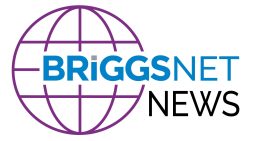Briggs Healthcare Clinical Consultant

Late last week, CMS released QSO 24-08-NH Enhanced Barrier Precautions in Nursing Homes, effective April 1, 2024. While many LTC providers implemented some form of enhanced barrier precautions (EBP) in response to the CDC’s updated guidance – Implementation of PPE use in Nursing Homes to Prevent the Spread of Multidrug-Resistant Organisms (MDROs) in July 2022, CMS is clarifying through this Memo how this applies to and is required in LTC settings.
CMS is incorporating the guidance related to EBP into its general infection control regulation, F880, Infection Prevention and Control. This regulatory requirement outlines the expectation that LTC providers have a system for preventing, identifying, reporting, investigating, and controlling infections and communicable diseases according to accepted national standards. As such, this new guidance related to EBP addresses the prevention aspect of the rule by requiring measures in attempt to prevent the spread of MDROs amongst nursing home populations. CMS has shared the rationale for this guidance is that up to 50% of LTC residents have some form of colonized or active MDRO infection.
A key aspect of this guidance is the balance of infection prevention and maintaining a homelike environment for residents. The EBP guidance is not intended to add a layer to isolation practices, but rather to avoid the need for isolation by preventing new cases of infection requiring more stringent measures. When following EBP, residents are not restricted to their rooms or from participating in community activities or dining. This means providers will be challenged to comply with the rule without implementing more than is required to ensure resident environments are protected.
The guidance states, that EBP are indicated for residents with any of the following:
- Infection or colonization with a CDC-targeted MDRO when Contact Precautions do not otherwise apply; or
- Wounds and/or indwelling medical devices even if the resident is not known to be infected or colonized with a MDRO.
EBP are indicated when performing the following high-contact resident care activities:
- Dressing
- Bathing/showering
- Transferring
- Providing hygiene
- Changing linens
- Changing briefs or assisting with toileting
- Device care or use: central line, urinary catheter, feeding tube, tracheostomy/ventilator
- Wound care: any skin opening requiring a dressing
CMS further defines wounds as chronic wounds, not shorter-lasting wounds, such as skin breaks or skin tears covered with an adhesive bandage (e.g., Band-Aid®) or similar dressing. Examples of chronic wounds include but are not limited to, pressure ulcers, diabetic foot ulcers, unhealed surgical wounds, and venous stasis ulcers.
Indwelling medical device examples include central lines, urinary catheters, feeding tubes, and tracheostomies. A peripheral intravenous line (not a peripherally inserted central catheter) is not considered an indwelling medical device for the purpose of EBP.
CMS is directing surveyors to evaluate LTC providers’ use of EBP when reviewing sampled residents for whom EBP are indicated and to focus their evaluation of EBP use as it relates to CDC-targeted MDROs.
CMS has also foreshadowed survey resources will be updated, however, as of the date of this article updates have not occurred.
Please review the information within QSO-24-08-NH with key stakeholders (e.g., IPs, DONs, environmental services, families, residents) to ensure a smooth and seamless implementation of EBP.
